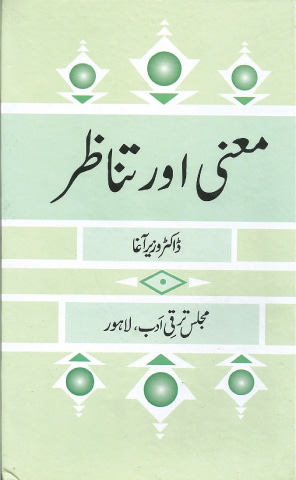
‘GESTALT’ is a German word which literally means ‘form’ or ‘shape’ and in psychology it is used to denote “an organised whole that is perceived as more than the sum of its parts”, says the Concise Oxford English Dictionary.
The gestalt theory says that the whole is more than the sum of its parts. In other words, our mind tends to understand a phenomenon as whole — greater than its individual parts — if they are otherwise perceived in isolation. Gestalt theory was successfully applied in psychology, but the theory is applied to other fields, too, such as education, communication, creative arts and literature.
The gestalt theory is somehow connected to a literary theory known as ‘reader-response theory’. Among the literary theories that have gained much popularity during the last hundred years or so is reader-response theory, which analyzes the response of a reader towards a text. But it has different methodologies including structuralism and phenomenology and the main purpose of the analysis is to find codes in a text that have meanings. But Wolfgang Iser, a German phenomenologist, developed a different reader-response theory that emphasizes the perception rather than the text. As put by Bressler, “the true poem can exist only in the reader’s consciousness, not on the printed page”. So, meaning can exist only when the reader and the text interact, says the theory.
Iser says that the critic should not try to explain any text but should try to study and understand the response of the reader and the effects that a text has on him or her. So Iser uses gestalt psychology to study the perception of a reader and an individual’s responses. According to this theory, a reader is as important as the text itself.
In literature, some critics — while analysing literary works — derive ideas from a vast range of diverse theories rather than relying on one theory and this practice is dubbed as eclecticism or an eclectic approach. In Urdu, eclectic criticism is often translated as imtizaji tanqeed and Vazeer Agha is credited with not only using the term but also explaining it and analyzing many works of Urdu literature in the light of diverse theories, including reader-response theory, structuralism and gestalt psychology.
Among many critical works penned by Vazeer Agha is Ma’ani Aur Tanaazur, a book that had first appeared in 1988. Lahore’s Majlis-i-Taraqqi-i-Adab had posthumously published the second edition. The second edition was published in 2016 and now reprinted includes six extra articles that Agha Sahib wanted to insert in the second edition. The book, containing scholarly critical articles, has two portions that are named theoretical criticism and applied criticism. Both are subdivided in several parts according to the themes of the articles.
As mentioned by Prof Tehseen Firaqi in his foreword to the book, Shahid Shaidai was instrumental in preparing this second edition. Prof Firaqi has rightly mentioned that Vazeer Agha was one of our critics whose reading was amazingly vast and though he was quite an important representative of modern Urdu poem, Vazeer Agha’s stature as a critic is much higher. His theoretical arguments on criticism are philosophical but in his practical criticism too he never quite renounces this philosophical approach, says Firaqi.
In his introduction, Vazeer Agha has succinctly discussed different critical theories and approaches. He says the study of literature is not like studying historical relics but it is like study of geology since literary genres, theories and trends do not exist in history like ruins of the ancient cities. Rather, the entire literary past keeps on breathing at the same time. He explains this view with an interesting quote from Northrop Frye who spoofs those who discuss the birth and death of genres and literary theories. Frye says “the literary chit-chat which makes the reputation of poets’ boom and crash in an imaginary stock exchange is pseudo-criticism”.
Agha Sahib then goes on to touch upon, with examples, structuralism, deconstructionism, neo-historicism, reader-response theory, historical/biographical criticism, formalism, New Criticism, Marxism and some other literary theories. But in the final analysis, he says the 21st century would be (he penned these lines in 1988) the century of eclecticism, or imtizaji tanqeed.
This first article is just the tip of the iceberg and one can well imagine how Vazeer Agha must have discussed some of these theories in articles that make it to the book. He has analyzed certain pieces of Urdu literature in the second part of the book, which deals with applied criticism, in the light of literary theories.
Vazeer Agha wrote a large number of books and many of them are on criticism. He died on September 8, 2010, in Lahore.
Published in Dawn, September 22nd, 2020













































Dear visitor, the comments section is undergoing an overhaul and will return soon.